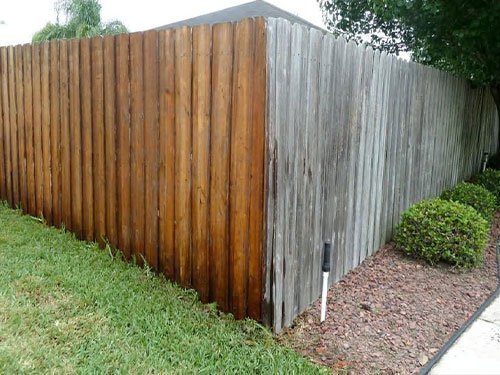Efficient Deck Cleaning Near Me: Restore Your Deck's Elegance
Exactly How to Accomplish Professional Results With Deck Staining
The process of changing an aging deck into a revitalized outside area needs a lot more than just a coat of stain; it requires a methodical method and interest to detail. From selecting the ideal discolor for your deck's timber type to mastering the application method, each action plays a critical function in the last result.
Selecting the Right Discoloration
Picking the proper stain for your deck is a vital choice that dramatically affects the overall appearance and long life of the coating. When picking a stain for your deck, it is important to think about both the visual preferences and the practical elements of the item. The very first consideration is whether you prefer a transparent, semi-transparent, or strong shade tarnish. Transparent stains permit the natural elegance of the timber to reveal through but use much less UV defense. Semi-transparent spots offer a concession in between color and wood grain exposure while using moderate UV protection. Solid color discolorations, on the various other hand, provide one of the most UV protection and use a wide variety of color choices yet will entirely conceal the timber grain.

Additionally, consider the kind of timber your deck is made from, as various spots are formulated to function best with particular wood types. Understanding the level of maintenance you are eager to devote to is also vital, as some discolorations may need more regular reapplication than others. By thoroughly thinking about these aspects, you can select a stain that not only boosts the appearance of your deck but additionally shields it for years to find.
Preparing the Deck Surface Area
When taking into consideration deck staining, the first step in the direction of accomplishing expert outcomes entails completely preparing the deck surface. Appropriately preparing the deck surface area is essential as it guarantees that the discolor sticks well and provides durable protection to the timber.
Fining sand the deck surface is additionally necessary to smooth out any kind of rough locations and open up the wood pores for better stain penetration. Use a medium-grit sandpaper to sand the deck in the direction of the wood grain.
Lastly, secure any type of nearby plants, furnishings, or surfaces from prospective damages by covering them with plastic bed linen or ground cloth. Taking the time to thoroughly prepare the deck surface sets the structure for an effective staining task and ensures professional-looking outcomes.
Using the Stain
To attain a professional surface when discoloring a deck, precise application of the tarnish is vital. Apply the stain equally, see post adhering to the timber's grain to improve the deck's natural beauty. By applying the tarnish diligently, you'll achieve a professional-looking coating that enhances both the appearance and long life of your deck.
Making Sure Correct Drying Time
Making certain ample drying time post-staining is vital to the total success of the deck task, as it allows the click to read tarnish to appropriately set and bond with the wood surface. Rushing this stage can result in a variety of issues, including irregular coloring, inadequate attachment, and a much shorter life expectancy for the surface. The drying out time called for can differ based upon aspects such as the sort of discolor utilized, climate problems, and the porosity of the timber. As a basic standard, a lot of deck spots will need a minimum of 24-48 hours to dry completely.
Throughout this drying duration, it is important to maintain the deck surface devoid of any kind of foot web traffic, furniture, or various other objects that might disrupt the coating. Furthermore, it is important to avoid direct exposure to moisture, such as rainfall or dew, which can endanger the drying procedure. When gently massaged, correctly dried out stain will certainly feel completely dry to the touch and will not leave any residue on your fingers. Making the effort to ensure thorough drying out will add dramatically to the longevity and look of your stained deck.
Keeping Your Stained Deck
Appropriate upkeep of a tarnished deck is important for protecting the honesty and appearance of the finish achieved through extensive drying out - pressure washing near me. To maintain your discolored deck successfully, normal cleansing is necessary. Brush up away particles and dust regularly to stop staining and mold growth. Think about making use of a mild detergent blended with water to scrub the surface use this link area and remove any built-up gunk. It is recommended to clean your deck at least two times a year, ideally in the springtime and fall, to keep it looking fresh and dynamic.

Verdict
Finally, attaining expert results with deck staining involves selecting the appropriate stain, effectively preparing the deck surface, using the stain evenly and constantly, permitting sufficient drying time, and maintaining the discolored deck on a regular basis. By following these steps carefully and diligently, you can guarantee a wonderfully discolored deck that improves the appearance and long life of your outside space.

Correct maintenance of a stained deck is vital for protecting the stability and look of the surface attained with extensive drying.